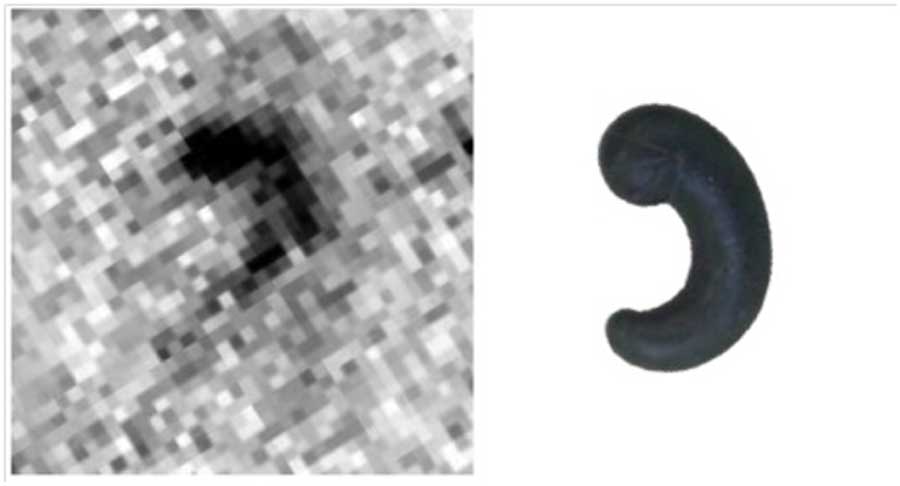The focus of the team’s research was the young galaxy LAE 221724+001716, which lies about 11.6 billion light-years distant from Earth. Akio Inoue from Osaka Sangyo University in Japana had made observations with the Subaru Telescope’s prime focus camera (Suprime-Cam) and identified this galaxy as one of those emitting strong ultraviolet radiation that ionizes hydrogen atoms — it is a Lyman-alpha emitter (LAE) and can provide important clues about the progenitors of Milky Way-type galaxies. Although he noticed that there was a separation between the galaxy itself and the emission point of ionizing radiation, he concluded that this galaxy did not include the effect of any foreground galaxies, given the negligible probability of an overlapping foreground galaxy with such a small separation from its background galaxy. However, another research team using Keck’s Low Resolution Imaging Spectrometer (LRIS) found that the radiation, originally interpreted as ionizing radiation from LAE 221724+001716, came from a foreground galaxy located about 9.9 billion light-years from Earth.
“This result was very amazing to me, since this is the discovery of an extremely rare system,” said Inoue. The finding sparked Taniguchi’s idea for the current research: “Soon after I knew this observational result, I became aware of the possibility that light from LAE 221724+001716 is gravitationally amplified by the foreground galaxy.”
According to Einstein’s theory of relativity, when light from an object in the distant universe travels close to a foreground source, it bends and amplifies (or magnifies) the light from the background object. This gravitational lensing effect facilitates the detection of faint objects not originally bright enough for detection.
However, it is important to know how large the gravitational amplification is in order to estimate the object’s absolute luminosity, which relates to its stellar mass and formation history. Nakahiro performed most of the amplification research as part of his university studies. Using observational data from the Subaru Telescope, the scientists used three quantities for estimating amplification to evaluate the mass of the foreground galaxy: 1) the distance from Earth to the background galaxy; 2) the distance between the foreground and background galaxies; and 3) the angular separation between the two galaxies.
The scientists found that the stellar mass of the foreground object was about a billion solar masses, which corresponds to only 1 percent of our Milky Way’s mass. The estimated stellar mass is rather small among the galaxies in the universe, and its gravitational amplification is only about 20 percent at most. The foreground galaxy is still forming, and its stellar mass is increasing. The astronomers concluded that the gravitational lensing effect from such a young forming galaxy does not significantly affect the luminosity of any background galaxies.
“In this research, we have analyzed the gravitational amplification for only one object,” said Nakahiro. “Thus far, we have found similar objects in the literature, so I will evaluate the gravitational lens effects of these objects and tackle the challenging questions of our universe.”










